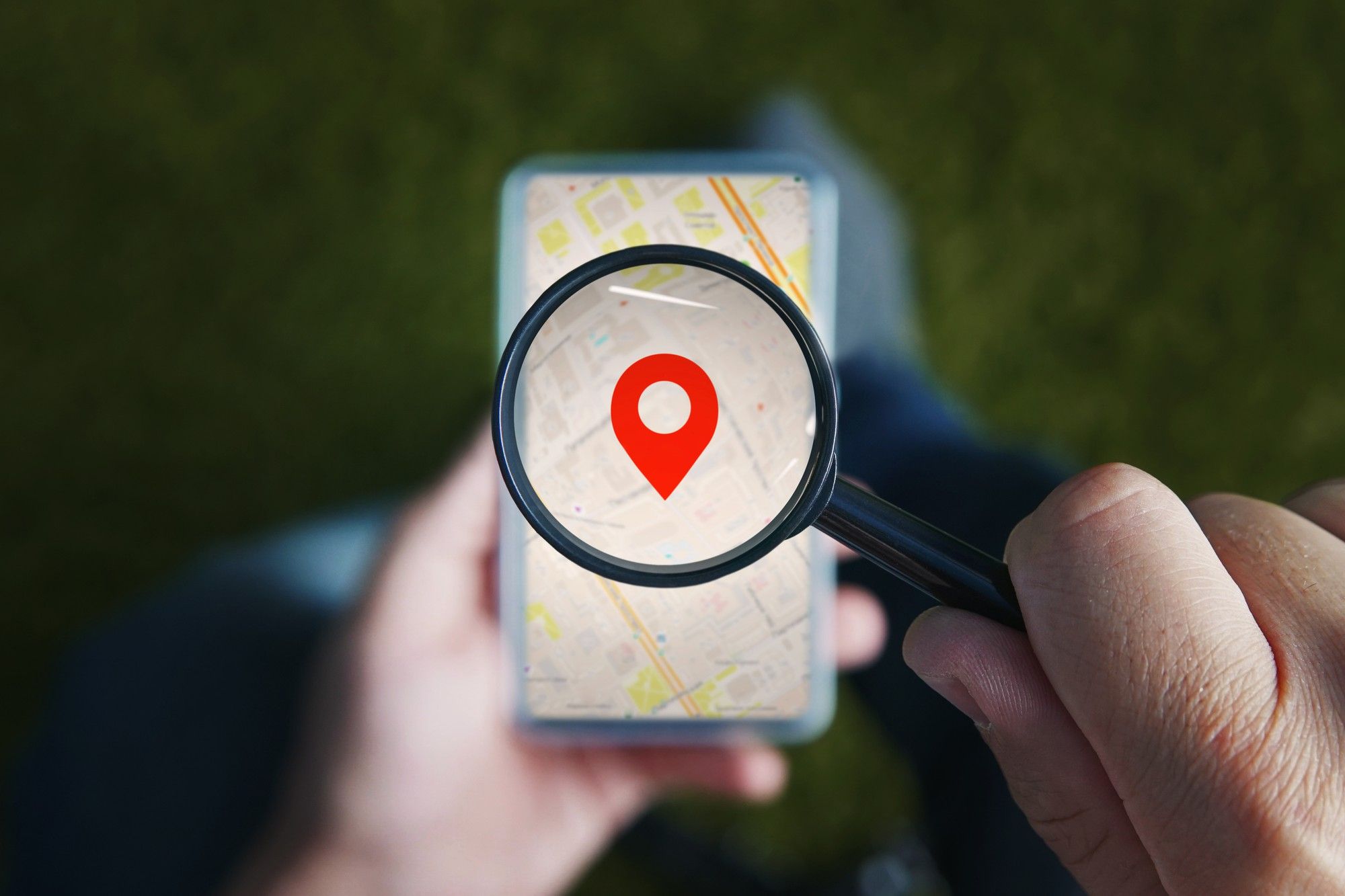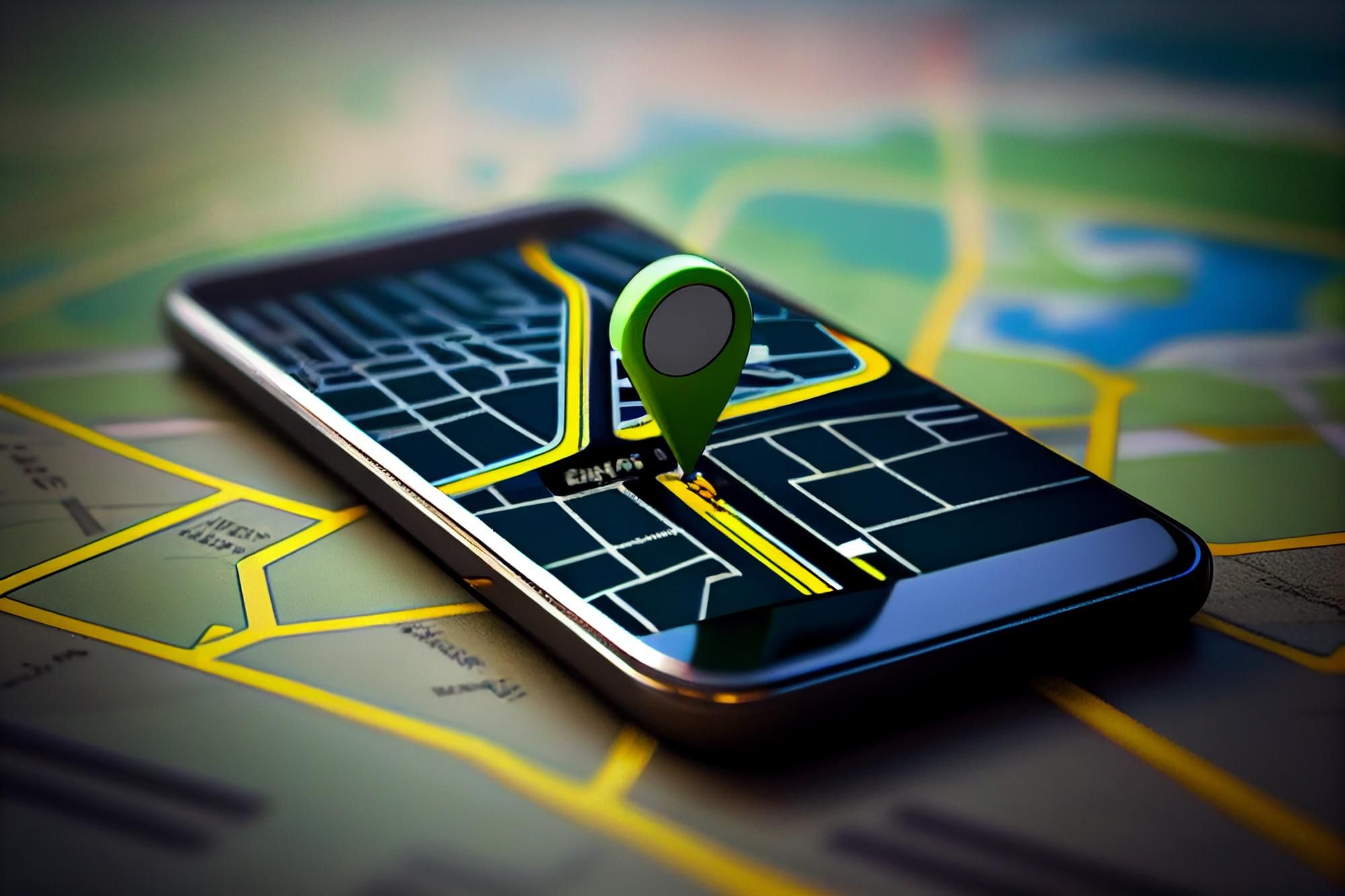As humans, we have an innate desire for precision and accuracy. Whether it's in navigating our way through a new city or tracking our daily physical activity, we rely heavily on technology to provide us with accurate information.
One such technology that has revolutionized the way we navigate and track our movements is Global Positioning Systems (GPS). GPS has become an indispensable tool in today's world, used by everyone from hikers and pilots to farmers and emergency responders.
But how accurate is GPS? Is it reliable enough to guide us through treacherous terrain or help us navigate unfamiliar roads? In this article, we will delve into the intricacies of GPS unit technology and explore its accuracy in various contexts. Through an in-depth exploration of this topic, we hope to shed light on the true potential of GPS systems and uncover their limitations.
What is (GPS) Global Positioning Systems?

Global Positioning Systems (GPS) can be metaphorically described as a sophisticated compass that utilizes satellite technology to accurately determine the accurate gps tracking and location of the movement of objects on Earth.
The GPS consists of satellites that orbit Earth, transmitting signals to a GPS tracker receiver on the ground. These signals provide information about the receiver's location, time, and velocity.
The better accuracy of GPS is determined by several factors such as atmospheric conditions, signal blockages, and the high-quality GPS of the receiver used.
However, with advancements in technology and improvements in satellite positioning systems over the years, GPS has become an indispensable tool for navigation and tracking purposes.
From personal use in cars or smartphones to professional applications in aviation and maritime industries, GPS has revolutionized how we navigate our world with precision and ease.
How Does GPS Work?

The functioning of GPS relies on a network of orbiting satellites that transmit signals to ground-based receivers. These signals contain information about the gps time and distance between the satellite and the receiver, allowing the GPS device to calculate its exact gps location on Earth. To achieve accuracy in navigation, at least four satellites are needed to triangulate the position of a GPS device.
GPS technology has come a long way since its inception in 1973. Today, it is widely used for various applications such as aviation, marine navigation, geolocation services, and even personal fitness tracking devices.
This technology has revolutionized modern navigation by providing reliable accuracy in determining locations anywhere on Earth where there is an unobstructed view of the sky. As more satellites are added to the GPS network and advancements in technology continue to improve signal strength and processing speed, we can expect even greater precision in GPS technology in the future.
What is the best GPS accuracy?
Like a skilled archer hitting a bullseye, optimal GPS accuracy is achieved when at least four satellites are used to triangulate a receiver's location.
When using fewer than four satellites, the accuracy may be compromised due to incomplete GPS data. However, even with all four satellites in use, factors such as atmospheric conditions and satellite positions can still affect GPS accuracy.
To improve accuracy, many GPS devices now incorporate additional technologies such as GLONASS (Global Navigation Satellite System) or Galileo systems, increasing the number of available satellites for tracking. These technologies also enhance reliability in areas where GPS signals may be obstructed by buildings or trees, for example.
Overall, accurate GPS is essential for reliable tracking and navigation for personal use and in industries such as transportation and logistics where precise location information is crucial for efficient operations.

How Accurate is GPS?
Under normal conditions, the accuracy of GPS systems for civilian use, known as the Standard Positioning Service (SPS), can provide horizontal positioning accuracy within a 7.8-meter radius 95% of the time.
However, several environmental factors such as atmospheric conditions, signal multipath, satellite geometry, and clock errors can decrease its precision.
To improve accuracy to within a few centimeters for applications like precision agriculture, construction, and surveying, augmentation techniques like Differential GPS (DGPS) and Real-Time Kinematic (RTK) GPS are used.
The future deployment of next-generation GPS satellites (like GPS Block III), dual-frequency receivers adoption, and integration of augmentation systems are expected to improve GPS accuracy significantly.
1. Typical Accuracy
Achieving precise positioning on a global scale is a critical component of modern navigation and geolocation. The Standard Positioning Service (SPS) GPS systems provide horizontal accuracy within a 7.8-meter radius for civilian use in normal conditions.
This level of accuracy has made GPS an essential tool for navigation and various other applications such as surveying, agriculture, and disaster management.
To understand the typical accuracy provided by SPS GPS systems better, we can consider the following bullet points:
- SPS GPS provides horizontal positioning accuracy.
- The level of accuracy is within a 7.8 meter radius.
- This level of accuracy is maintained 95% of the time under normal conditions.
- SPS GPS systems are designed for civilian use.
- The precision offered by SPS GPS makes it ideal for several critical applications.
The improvement in technology has significantly enhanced the precision and reliability of GPS systems over the years. Today, SPS GPS provides unparalleled levels of accuracy that have transformed our ability to navigate and locate ourselves easily.
Despite its limitations under certain conditions, SPS remains a robust system that continues to play a vital role in various sectors worldwide.
2. Influence of Environmental Factors:
Various environmental factors can significantly impact the accuracy of GPS systems. One of the primary factors that affect GPS accuracy is atmospheric conditions.
The ionosphere and troposphere can cause signal delays and distortions, leading to errors in positioning information. For instance, during periods of high solar activity, the ionosphere may become more dense, which causes signals to bend off course.
Another factor that affects GPS accuracy is signal multipath. This occurs when satellite signals bounce off reflective surfaces such as buildings or mountains before reaching the receiver. The reflected signals then combine with direct signals at the receiver antenna, causing interference and ambiguity in position calculations.
Modern GPS receivers use advanced algorithms to filter out multipath errors to mitigate this effect. However, it is still crucial for users to understand how these environmental factors can affect their GPS accuracy to ensure they obtain reliable positioning information from their devices.
3. Differential GPS and RTK:
Augmentation techniques such as Differential GPS and Real-Time Kinematic GPS significantly enhance the accuracy of positioning information, making them indispensable for several critical applications like precision agriculture, construction, and surveying.
DGPS uses a known location (a base station) to correct errors in the GPS signal received by a rover receiver. The base station provides corrected location information that is transmitted to the rover through a different communication channel. This process accounts for atmospheric delays, satellite clock gps drifts or errors in satellite orbits and improves accuracy to within decimeters.
Real-time kinematic (RTK) GPS takes the correction one step further by transmitting real-time corrections from a base station to the rover. RTK uses carrier phase measurements instead of what DGPS does using code measurements alone, improving positional accuracy to centimeter levels.
This technology is used in high-precision applications like autonomous vehicle tracking, robotics, and geodetic surveys requiring sub-centimeter precision. With advancements in this technology over time, it has become essential for various industries requiring highly ensure accurate positioning information.
4. Precise Positioning Service:
The Precise Positioning Service (PPS), utilized by the U.S. military, offers a potential solution for improving GPS accuracy by using dual frequencies to correct signal distortions.
Unlike civilian GPS, which uses only one frequency to transmit signals, PPS employs two frequencies that allow for better correction of atmospheric disturbances and other sources of error. This results in more precise positioning data that is crucial for military operations.
Moreover, dual-frequency GPS technology has the potential to improve accuracy in civilian applications as well. For instance, it could enhance precision agriculture by enabling farmers to map their fields more accurately and apply fertilizers or pesticides with greater precision.
Similarly, it could aid construction workers in surveying sites and laying foundations more accurately. Overall, PPS represents an exciting possibility for achieving greater accuracy in GPS positioning via its use of dual frequencies and advanced signal processing techniques.
5. Future Improvements:
The U.S. military has utilized the Precise Positioning Service (PPS) to improve GPS accuracy through dual-frequency signals that correct for distortions. However, with the deployment of next-generation GPS satellites like GPS Block III and the integration of augmentation systems, there is a promising future for even greater precision in navigation and positioning.
To better understand the potential impact of these advancements on GPS accuracy, consider the following list:
1. Dual-Frequency Receivers: With dual-frequency receivers becoming increasingly common, users will be able to access more accurate data from multiple satellite signals.
2. Augmentation Systems: These systems use additional sensors to improve signal integrity and enhance overall accuracy.
3. Next-Generation Satellites: The new generation of GPS satellites will provide more powerful signals with improved capabilities for correcting errors.
4. Greater Precision: As these advancements are integrated into everyday devices, users can expect greater navigation and positioning accuracy than ever before.
Through these technological improvements, we can look forward to a future where GPS is an essential and incredibly precise tool.
Users will have access to real-time tracking location information with unprecedented extremely accurate, proving invaluable in fields ranging from agriculture to aviation.

Where GPS accuracy really matters?
GPS accuracy is critical for ensuring reliable measurements and data analysis in high-precision applications such as surveying, mapping, and geodesy.
For example, in the field of surveying, accurate GPS readings are essential to determine the location and property boundaries, create topographic maps, and perform construction site layouts.
Similarly, in the field of geodesy (the study of the Earth's shape and gravitational field), precise GPS measurements are necessary to understand how the Earth changes over time due to factors such as tectonic plate movements and sea level rise.
GPS accuracy also plays a significant role in transportation systems such as aviation and maritime navigation. In these industries, a deviation of even a few meters could result in disastrous consequences. Therefore, accurate GPS signals ensure safe travel for millions of people every day.
Additionally, technological advancements have allowed for more precise location-based services on smartphones and other devices that rely on GPS signals. Overall, improving the accuracy and reliability of GPS has far-reaching implications across various industries where GPS accuracy really matters.
What is the most accurate GPS system?
With its ability to accurately pinpoint locations, the most precise navigation system available today has revolutionized how we navigate our world.
The Global Navigation Satellite System (GNSS) is currently the most accurate GPS system. It consists of a network of orbiting satellites that transmit signals to ground-based receivers, allowing users to determine their location with remarkable precision. The GNSS can sometimes locate positions within a few meters or even centimeters.
The accuracy levels of GPS systems have been improving continuously over the years, and this trend is expected to continue in the future. Researchers are developing new technologies such as multi-frequency receivers and advanced signal processing algorithms that can improve accuracy even further.
These improvements will make GPS systems more reliable and accurate, enhancing their usability in various applications such as surveying, agriculture, aviation, and military operations. With these advancements, it's no wonder why GPS has become an indispensable tool for navigation worldwide.
Can GPS System Work for Dogs?
Dogs can be tracked and located using GPS technology, providing an effective way for pet owners to monitor their pets' movements. GPS tracking devices for dogs work by transmitting location information to a receiver, which then displays the dog's location on a map.
This technology has become increasingly popular among pet owners, allowing them to track their pets' whereabouts in real time. The accuracy and reliability of these GPS systems vary depending on the device being used. Some GPS tracking accuracy devices have been proven to be highly accurate, while others may have errors that could affect the location of data being transmitted.
Factors such as signal interference and battery life can also impact the effectiveness of these devices. Despite these limitations, GPS tracking technology remains one of the most reliable ways to track and locate dogs. It is a valuable tool for pet owners who want to ensure their furry friends are always safe and secure.

Frequently Asked Questions
Is GPS affected by weather conditions?
Although GPS signals can be affected by weather conditions such as heavy rain, snow or fog, modern GPS receivers and satellites have advanced technology to mitigate these effects. Therefore, the impact of weather on GPS accuracy is minimal in most cases.
Can GPS be used in underwater navigation?
GPS can be used for underwater navigation with specialized equipment that utilizes acoustic signals. However, GPS signals cannot penetrate water and the accuracy may be affected by factors such as water depth, temperature, and salinity.
How does GPS technology impact air travel?
GPS technology plays a crucial role in air travel, aiding pilots in navigation, flight planning, and landing. It enhances safety and reliability by providing accurate positioning data to aircraft systems, reducing the likelihood of accidents caused by human error.
Are there any privacy concerns associated with GPS usage?
Privacy concerns arise when GPS usage involves unauthorized tracking or sharing of location data. This issue is particularly relevant for individuals who may be concerned about their personal safety and those who value privacy in their daily lives.
Can GPS be used to track the movement of wildlife in their natural habitats?
GPS technology is used to track wildlife movement in their natural habitats. It provides accurate and reliable data for conservationists, researchers, and scientists to study animal behavior, migration patterns, habitat use, and population dynamics. This information aids in developing effective wildlife management strategies.
Conclusion
The Global Positioning System (GPS) is a satellite-based navigation system that provides location and time information in all weather conditions. GPS works by using a network of satellites to determine the exact location or position, velocity, and timing of a receiver on Earth. The accuracy of GPS depends on various factors such as atmospheric conditions, satellite geometry, and signal interference.
The best GPS accuracy can be achieved through Differential GPS (DGPS) which uses ground-based reference stations to improve the accuracy of the GPS signal.
However, even with DGPS, the accuracy of GPS can vary from a few meters to several centimeters depending on its application. In applications where precise positioning is critical such as surveying or aviation, high-precision GPS systems are used for maximum accuracy.
GPS accuracy is important in various fields including transportation, agriculture, construction, and emergency services. Accurate positioning can save lives in emergency situations while improving efficiency and productivity in various industries.
While no technology is perfect, advancements in GPS technology continue to improve its precision making it more reliable than ever before. Overall, the precision offered by global positioning systems has revolutionized many aspects of modern life with remarkable ease. It's no wonder that this technology has become one of our most treasured possessions.

